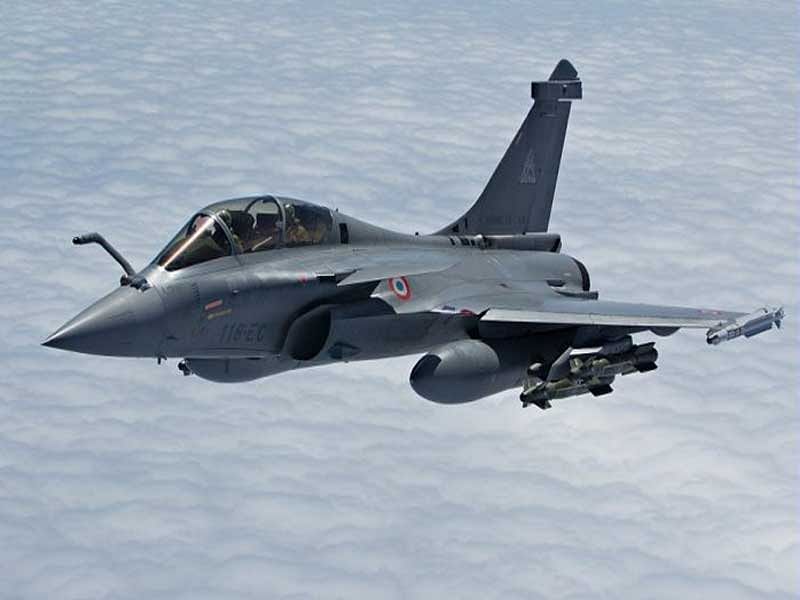
With only 36 Rafale combat jets ordered for even as the IAF’s squadron strength is rapidly depleting, the defence ministry have started yet another process for a large-scale purchase of fighter planes from abroad. The plan is to buy 110 jets, and this time, too, the plan is that a majority of them will be built in India. In an interview to DH’s Kalyan Ray, former Vice Chief Air Marshal R K Sharma, who was closely associated with the previous exercise to buy 126 medium multi-role combat aircraft, said it will be another 4-5 year wait before a decision is taken on the purchase. Excerpts:
How critical are the 36 Rafale fighter jets for the IAF?
The IAF needs them because of the obsolescence (of current fighters). This need was foreseen long time back. It was decided that in these many years, so many aircraft will retire and we have to replace them. That’s how the 126 MMRCA programme began. It’s critical to have new aircraft, otherwise our combat unit strength will continue to go down.
But you got only 36 aircraft when you needed 126. The gap is too big.
The government has to draw a balance between budgets and what is immediately required. The 36 aircraft is akin to two combat units, 126 would be equivalent to six squadrons. Air HQ and MoD are at it to find a solution to fill this gap.
With a fresh RFI (Request for Information) for 110 aircraft and responses from the same six companies (and aircraft) that took part in the MMRCA programme, will it again be the same lengthy process?
The MMRCA programme started in 2006 (the plans were made even before that) and continued till 2012-13, after which it stopped. Now, when you again set the ball rolling, the time taken may be a bit less because the need to buy these aircraft has already been established. The timeframe to make decisions could be less. But the technical part of evaluating the aircraft and the contract negotiations thereafter cannot be shrunk or truncated. So, it’s not as if the new deal will happen in one or two years’ time. My guess is, it will be at least 4-5 years. At least 4 years. Today, we only have an RFI. The RFP (Request for Proposal) has to be given after a detailed scrutiny of the RFI. Subsequently, the proposals will come. The technical evaluation will take place. The reports will be made and studied. There are timeframes given in the Defence Procurement Procedure for all these. This, by itself, will take 2-3 years. Then comes the contract negotiations, which take a very long time because we have to negotiate the main contract, the offset contract and technology transfer details. Taken together, it will be 4-5 years.
Do the trials of the aircraft have to be as elaborate as it was the last time?
Last time, the trials were conducted on more than 650 points (Staff Qualitative Requirements). If an aircraft that participated in the last exercise was modified in the intervening period, the aircraft needs to be checked again. For example, the Gripen they offer now is not the same that we evaluated earlier. Its engine has been upgraded. The F-16 has undergone a change. Even in case of a small change, you have to evaluate. Also, our visualisation of the future has changed in the last 15 years and we may ask for some new equipment in the RFP. Those needs have to be chalked out. All 650 parameters may not have to be done, but I am absolutely sure that at least 75-80% of that will have to be checked. There is no choice. But evaluation in itself is not a time-consuming activity. During the MMRCA exercise, we called each aircraft here for not more than 10-12 days. We did trials at Jaisalmer and Leh in the same evaluation. The flight trial is not the time-consuming factor. The time-consuming factors are evaluation reports, discussions and negotiations. Evaluation of all the six planes can be finished in three months. Opening up the commercial proposals and determining the L1, along with lifecycle cost calculation, can take up to six months.
When you tested those six planes for the MMRCA programme, did you also test the weapons package?
Firing the weapons during trials is not the practice because the trial becomes expensive. There’s no need to do that. The weapons packages are bought separately. And it is bought depending on what the seller tells you about the capability of the aircraft.
When the MMRCA deal was negotiated, was it only for the aircraft or did it include the weapons package?
It would include the weapons package. I can’t go back and give you a certain answer, but yes, it would include some weapons. When you are deciding on your capability, it must include what weapons are to be bought. If you are buying an air defence fighter, you must know what kind of air-to-air missiles it can carry. You can’t say, I will fit whatever missile I have in my arsenal. You can’t do that. The weapon aiming computer, the main computer of the aircraft, all of them have software built in to be able to fire and deliver the weapon which the manufacturer has decided will go with this platform.
The government claims the 36 Rafales would carry a much better weapons package than was negotiated under MMRCA and that additional money was spent for that. What do you say?
Those (MMRCA) weapons have changed. There are different weapons in the current deal. The package has to include their cost.
Can the price difference between the two sets of weapons be so large?
I wouldn’t know that. Unless the government declassifies the information, I should not comment on that. It is for the government to declassify, which weapons, what package and how many numbers (India is getting for the additional money).
Also read: Rafale: Whiff of a scandal
